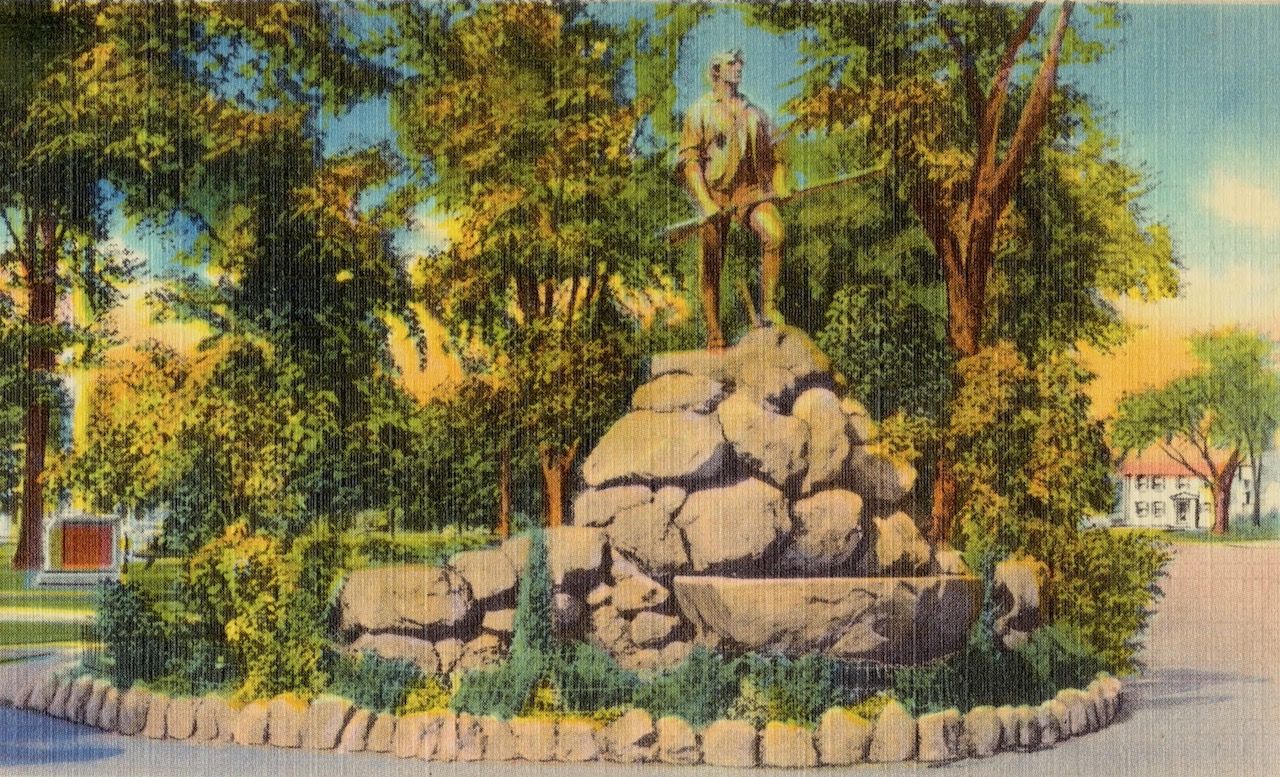
“Capt. Parker Minute Man at Lexington, Mass.” Card. Tichnor Bros. Inc., Boston, Mass., [ca. 1930–1945]. Digital Commonwealth.
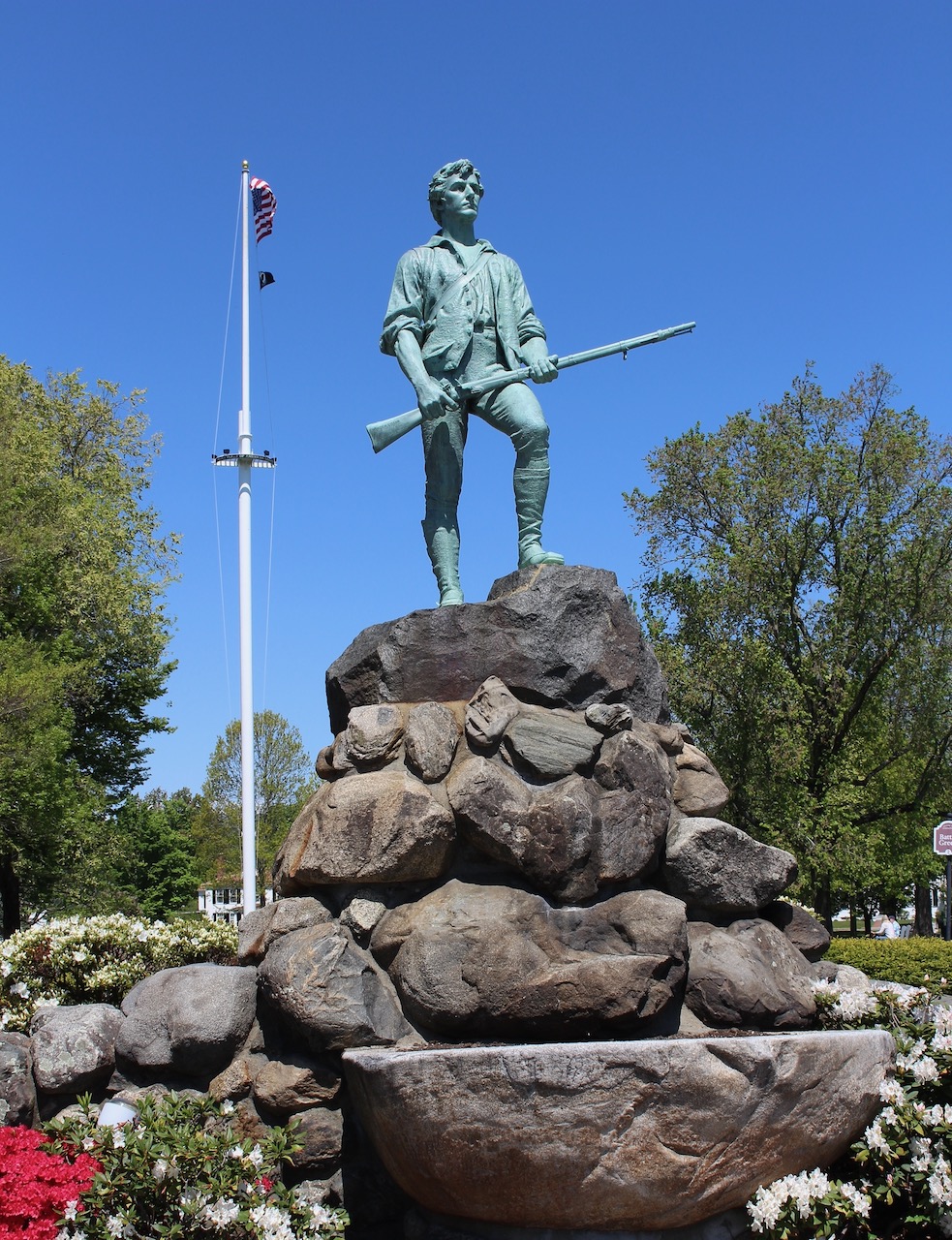
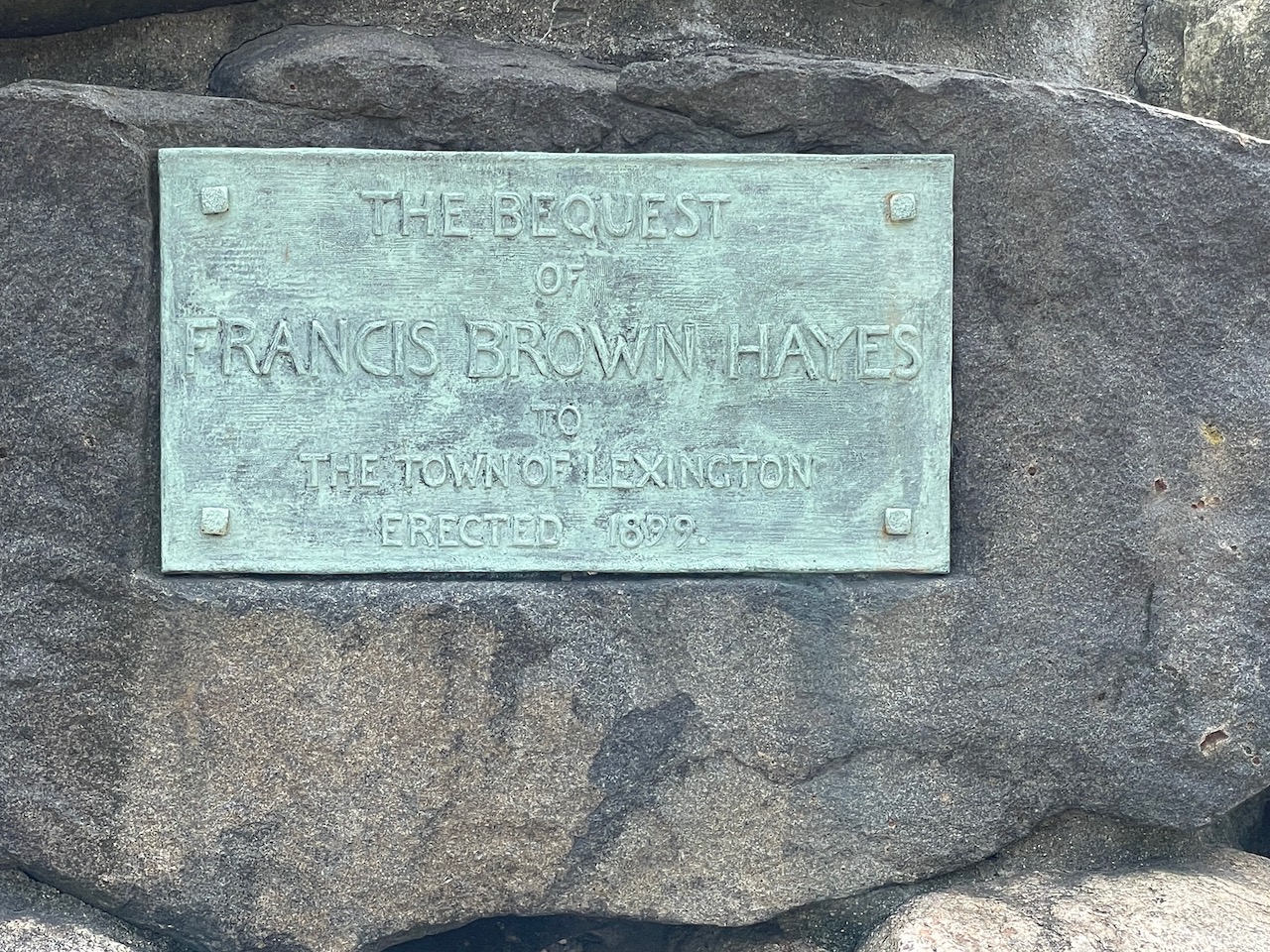
THE BEQUEST
OF
FRANCIS BROWN HAYES
TO
THE TOWN OF LEXINGTON
ERECTED 1899

Jones, Leslie. “Dignitaries, including Gov. Allen, at reenactment at Lexington.” Photograph. [ca. 1929–1931]. Digital Commonwealth.
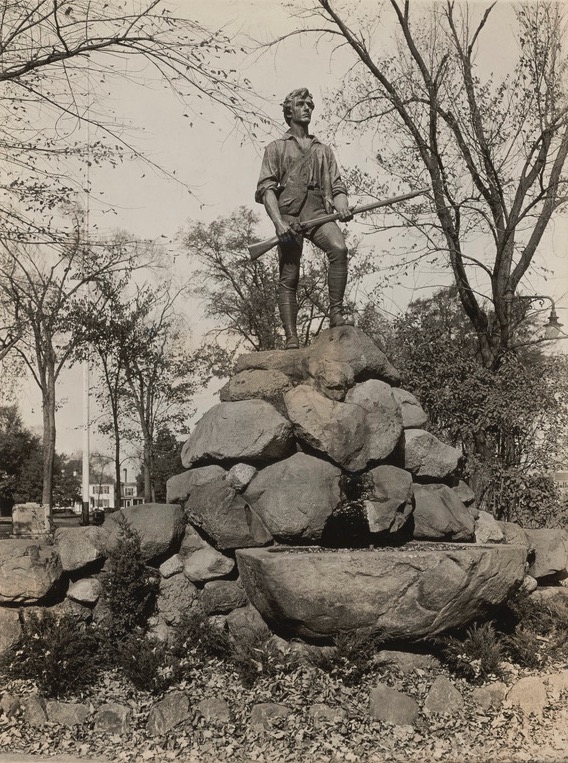
Abdalian, Leon H. “Captain Parker statue, Minuteman at Lexington Green, Lexington, Mass.” Photograph. October 19, 1929. Digital Commonwealth.
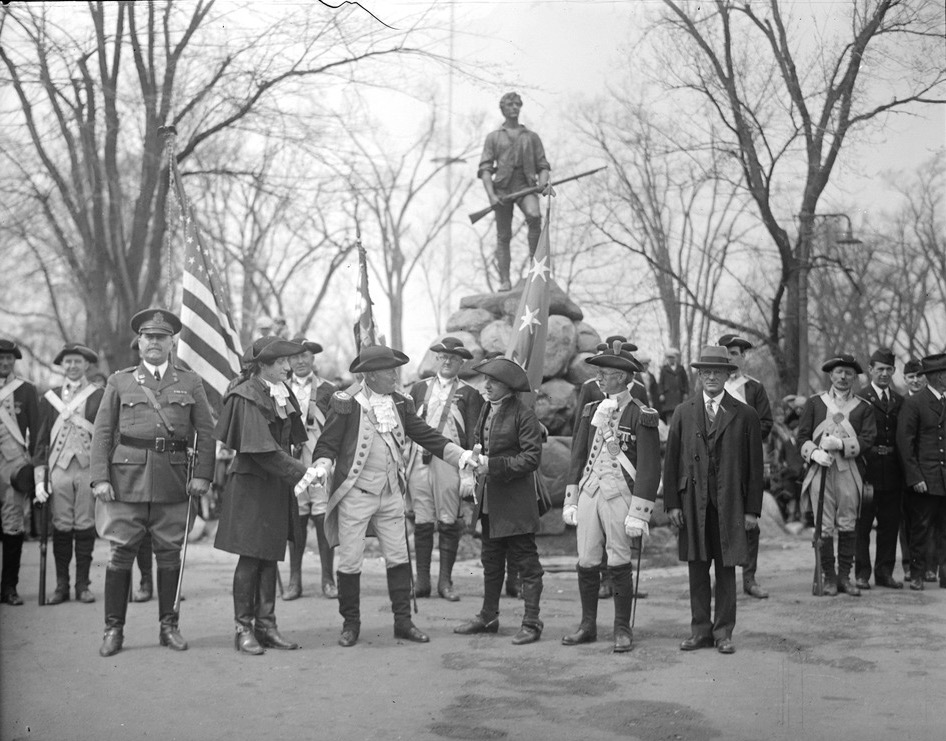
Jones, Leslie. “Men in colonial dress in front of minuteman stature, Lexington.” Photograph. [ca. 1917–1934]. Digital Commonwealth.
The Lexington Minute Man statue is a life-size bronze figure of a colonial farmer with musket by Boston sculptor Henry Hudson Kitson. Standing at the southeast corner of the Battle Green, facing the route of the British advance, the sculpture sits atop a rough fieldstone base, representing the resolve and sturdiness of the American patriots.
The statue was funded with a bequest of $10,000 from Francis Brown Hayes in 1898. Hayes’s father, who went by the same name, was among Lexington’s “most prosperous 19th century residents” according to the Lexington Comprehensive Cultural Resources Survey, having been a lawyer, railroad executive, state senator, U.S. congressman and, at the time of his death in 1884, President of the Massachusetts Horticultural Society.
Originally a functional drinking fountain and watering place for men, horses, cattle, and dogs, the statue was erected in 1899 and unveiled the following year on April 19th, the 125th anniversary of the Battles of Lexington and Concord. The sculpture was intended to portray an idolized image of Captain John Parker, leader of the Lexington militia in 1775.
Although referred to as the Minute Man, the statue is meant to represent a member of the Lexington militia, local colonists who had volunteered to be first responders to military and other threats. The actual minute men were an elite subset of this group, young and fit and able to respond quickly.
The inscription reads:
THE BEQUEST
OF
FRANCIS BROWN HAYES
TO
THE TOWN OF LEXINGTON
ERECTED 1899

